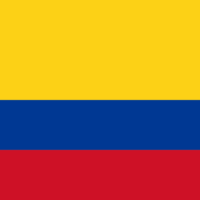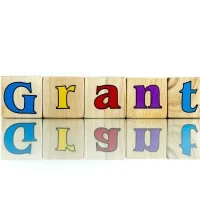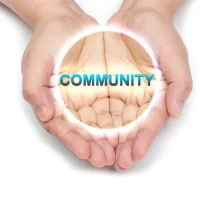Grants are a vital source of funding for various organizations, including nonprofits, educational institutions, small businesses, and government agencies. They provide the financial support necessary to implement projects, conduct research, and deliver services that benefit communities and society at large. Unlike loans, grants do not require repayment, making them an attractive option for organizations seeking to expand their reach or enhance their capabilities.
However, securing a grant is often a competitive process that requires careful planning, a clear understanding of the funding landscape, and a well-articulated proposal. The landscape of grants is diverse, encompassing federal, state, and local government funding, as well as private foundations and corporate sponsorships. Each type of grant comes with its own set of requirements and expectations.
For organizations looking to tap into this resource, it is essential to understand the nuances of grant writing and management. This article will explore real-world examples of how various entities have successfully navigated the grant process, highlighting actionable strategies and lessons learned along the way.
Case Study 1: Nonprofit Organization A
Nonprofit Organization A, dedicated to environmental conservation, faced significant challenges in securing funding for its initiatives. With a mission to restore local ecosystems and promote sustainable practices, the organization recognized that traditional fundraising methods were insufficient to meet its goals. After conducting thorough research on available grants, they identified several opportunities from environmental foundations and government agencies focused on sustainability.
To enhance their chances of success, Nonprofit Organization A invested time in developing a comprehensive grant proposal that clearly articulated their mission, objectives, and the impact of their work. They included data-driven evidence of past successes and outlined a detailed budget that demonstrated fiscal responsibility. Their efforts paid off when they secured a substantial grant that allowed them to launch a community-based reforestation project.
This initiative not only restored local habitats but also engaged community members in conservation efforts, fostering a sense of ownership and responsibility towards the environment.
Case Study 2: Small Business B
Small Business B, a startup focused on renewable energy solutions, sought funding to develop an innovative solar panel technology. Recognizing the potential for grants to support their research and development efforts, the business owner researched various funding opportunities available for small businesses in the clean energy sector. They discovered a federal grant program specifically designed to promote innovation in renewable energy technologies.
To apply for the grant, Small Business B crafted a compelling proposal that highlighted their unique approach to solar technology and its potential market impact. They included testimonials from early adopters and outlined a clear plan for how the grant funds would be utilized to advance their research. The proposal also emphasized the broader societal benefits of their technology, such as reducing carbon emissions and creating jobs in the green economy.
Ultimately, Small Business B was awarded the grant, which enabled them to refine their product and bring it to market more quickly than they had anticipated.
Case Study 3: Educational Institution C
Educational Institution C aimed to enhance its STEM (Science, Technology, Engineering, and Mathematics) curriculum but faced budget constraints that limited its ability to invest in new resources and programs. The administration recognized that grants could provide the necessary funding to implement innovative teaching methods and acquire advanced technology for students. They began by identifying potential grant opportunities from educational foundations and government programs focused on improving STEM education.
The institution assembled a team of educators and administrators to collaborate on a grant proposal that outlined their vision for an enriched STEM curriculum. They included specific goals, such as increasing student engagement in science projects and improving overall academic performance in STEM subjects. The proposal also featured partnerships with local businesses that would provide mentorship opportunities for students.
Their comprehensive approach resonated with funders, leading to the successful acquisition of a grant that allowed Educational Institution C to launch a series of hands-on STEM workshops and purchase new laboratory equipment.
Case Study 4: Government Agency D
Government Agency D was tasked with addressing homelessness in its community but struggled with limited resources to implement effective programs. Recognizing the need for additional funding, the agency explored various grant opportunities available through state and federal programs aimed at combating homelessness. They identified a specific grant designed to support innovative housing solutions for vulnerable populations.
To secure the grant, Government Agency D developed a proposal that outlined a multifaceted approach to addressing homelessness. This included not only immediate housing solutions but also wraparound services such as job training and mental health support. The agency engaged stakeholders from various sectors, including local nonprofits and businesses, to demonstrate community support for their initiative.
Their collaborative approach impressed funders, resulting in the successful acquisition of the grant. With this funding, Government Agency D was able to implement a pilot program that provided transitional housing and support services for individuals experiencing homelessness.
Case Study 5: Health Organization E
Health Organization E focused on improving access to healthcare services in underserved communities but faced significant financial barriers in expanding its outreach efforts. The organization recognized that grants could play a crucial role in funding initiatives aimed at increasing healthcare access and education. After researching available funding sources, they identified several health-focused grants from both government agencies and private foundations.
To maximize their chances of securing funding, Health Organization E developed a robust proposal that highlighted the pressing healthcare needs within their target communities. They included statistical data on health disparities and outlined specific programs aimed at addressing these issues, such as mobile health clinics and community health education workshops. The proposal also emphasized the organization’s commitment to sustainability by detailing plans for ongoing community engagement and partnerships with local stakeholders.
Their thorough approach led to the successful acquisition of multiple grants, enabling Health Organization E to expand its services significantly and improve health outcomes for thousands of individuals.
Common Strategies for Effective Grant Usage
Across these diverse case studies, several common strategies emerged that can enhance an organization’s ability to secure and effectively utilize grants. First and foremost is the importance of thorough research. Understanding the specific requirements and priorities of potential funders is crucial for tailoring proposals that resonate with their goals.
Organizations should take the time to review past funded projects and align their proposals accordingly. Another key strategy is collaboration. Engaging stakeholders from various sectors can strengthen proposals by demonstrating community support and shared commitment to addressing specific issues.
Partnerships can also enhance program implementation by leveraging additional resources and expertise. Furthermore, organizations should prioritize clear communication in their proposals—articulating not only what they plan to do but also how they will measure success and report outcomes. Finally, effective grant management is essential once funding is secured.
Organizations should establish robust systems for tracking expenditures, reporting progress, and evaluating program impact. This not only ensures compliance with funder requirements but also builds credibility for future funding opportunities.
Conclusion and Key Takeaways
In conclusion, grants represent a powerful tool for organizations seeking to make a positive impact in their communities. The case studies presented illustrate how diverse entities—from nonprofits to government agencies—have successfully navigated the grant landscape by employing strategic approaches tailored to their unique missions. Key takeaways include the importance of thorough research into funding opportunities, collaboration with stakeholders, clear communication in proposals, and effective management of awarded funds.
As organizations continue to seek innovative solutions to pressing social issues, understanding how to leverage grants effectively will remain essential. By learning from real-world examples and implementing best practices in grant writing and management, organizations can enhance their capacity to secure funding and ultimately achieve their goals more effectively.








































